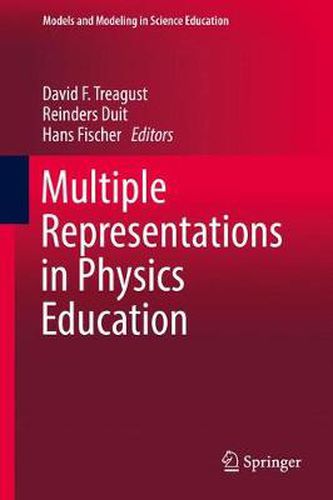Readings Newsletter
Become a Readings Member to make your shopping experience even easier.
Sign in or sign up for free!
You’re not far away from qualifying for FREE standard shipping within Australia
You’ve qualified for FREE standard shipping within Australia
The cart is loading…






This title is printed to order. This book may have been self-published. If so, we cannot guarantee the quality of the content. In the main most books will have gone through the editing process however some may not. We therefore suggest that you be aware of this before ordering this book. If in doubt check either the author or publisher’s details as we are unable to accept any returns unless they are faulty. Please contact us if you have any questions.
This volume is important because despite various external representations, such as analogies, metaphors, and visualizations being commonly used by physics teachers, educators and researchers, the notion of using the pedagogical functions of multiple representations to support teaching and learning is still a gap in physics education. The research presented in the three sections of the book is introduced by descriptions of various psychological theories that are applied in different ways for designing physics teaching and learning in classroom settings. The following chapters of the book illustrate teaching and learning with respect to applying specific physics multiple representations in different levels of the education system and in different physics topics using analogies and models, different modes, and in reasoning and representational competence. When multiple representations are used in physics for teaching, the expectation is that they should be successful. To ensure this is the case, the implementation of representations should consider design principles for using multiple representations. Investigations regarding their effect on classroom communication as well as on the learning results in all levels of schooling and for different topics of physics are reported. The book is intended for physics educators and their students at universities and for physics teachers in schools to apply multiple representations in physics in a productive way.
$9.00 standard shipping within Australia
FREE standard shipping within Australia for orders over $100.00
Express & International shipping calculated at checkout
This title is printed to order. This book may have been self-published. If so, we cannot guarantee the quality of the content. In the main most books will have gone through the editing process however some may not. We therefore suggest that you be aware of this before ordering this book. If in doubt check either the author or publisher’s details as we are unable to accept any returns unless they are faulty. Please contact us if you have any questions.
This volume is important because despite various external representations, such as analogies, metaphors, and visualizations being commonly used by physics teachers, educators and researchers, the notion of using the pedagogical functions of multiple representations to support teaching and learning is still a gap in physics education. The research presented in the three sections of the book is introduced by descriptions of various psychological theories that are applied in different ways for designing physics teaching and learning in classroom settings. The following chapters of the book illustrate teaching and learning with respect to applying specific physics multiple representations in different levels of the education system and in different physics topics using analogies and models, different modes, and in reasoning and representational competence. When multiple representations are used in physics for teaching, the expectation is that they should be successful. To ensure this is the case, the implementation of representations should consider design principles for using multiple representations. Investigations regarding their effect on classroom communication as well as on the learning results in all levels of schooling and for different topics of physics are reported. The book is intended for physics educators and their students at universities and for physics teachers in schools to apply multiple representations in physics in a productive way.